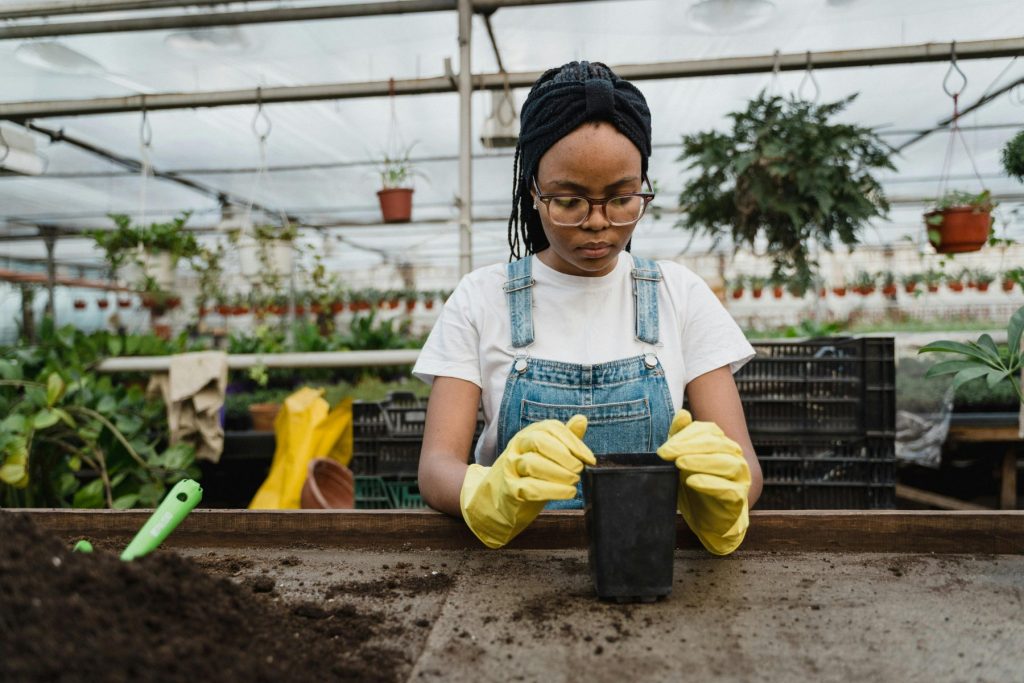In this blog you will find out why, after using peat for over 2000 years, there is a great effort put into reducing the amount of peat used everyday. Peat has been used as fuel since before the roman times, but today its main purpose is creating more fertile soil for potted plants. Even though this seems like a green and sustainable resource, the truth might tell a different story.
Need for peat
Peatlands are vital ecosystems essential for combating climate change, preserving biodiversity, and managing water systems. Unfortunately, these unique landscapes are being disrupted by our need for peat as fuel and soil, necessitating an urgent shift to more sustainable practices. Even though peat is not commonly used as fuel for stoves and heaters in the home anymore, the use of it in the agriculture and horticulture industries have skyrocketed. In the UK, legislation is gradually phasing out peat usage, making it helpful to learn how you can reduce your dependence on peat.

The vital role of peatlands
But before we talk about how we can reduce our peat usage, let’s take a look at what peat is exactly and why it is so important. Formed through the incomplete decomposition of waterlogged plant remains, peatlands can often be found around standing water or regions with a lot of rain.
But peatlands are more than just boggy swamps; they are among the most significant carbon storage systems on the planet. These ecosystems store more carbon than all the world’s forests combined, despite covering only a fraction of the land area. When peatlands are disturbed, they release the carbon they are storing, contributing to the emission of greenhouse gasses. Therefore, preserving and restoring peatlands is an important front in the fight against climate change.

Biodiversity and water management
In addition to their role in carbon sequestration, peatlands are rich in biodiversity, providing habitats for many rare and endangered species. The peatland ecosystems also play a very influential role in water management. They reduce flood risks, by absorbing excess rainfall, and during dry periods, they release the water stored, helping to maintain the flow in rivers and streams. This dual function makes them indispensable for maintaining natural water cycles and supporting diverse wildlife that call the peat home.
Stepping towards sustainability
For these reasons the UK advances its policies to ban peat harvesting and usage, this move underscores a global trend towards sustainable horticultural practices. This shift is encouraging nurseries and growers to seek out peat-free alternatives. These alternatives help align with environmental goals but also meet the increasing consumer demand for sustainable products. By reducing peat use, you support carbon storage, biodiversity, and better water management, fostering a healthier environment with less human intervention.

Alternatives to peat for nurseries and growers
We mentioned there are alternatives to peat but, what are they? Nurseries and growers seem to enjoy the following: Coconut coir, derived from coconut husks, offers excellent water retention and aeration. Rice husks are another viable option, providing good drainage and promoting healthy root growth. Wood fiber and composted bark are also effective substitutes, enhancing soil structure and nutrient content. By adopting these alternatives, you can maintain high-quality plant production while contributing to environmental conservation.
I hope you now better understand the importance of peatlands for biodiversity, and water management reducing CO2 emissions. And what sustainable choices are available to help you reduce your peat consumption.
Stay informed about sustainable practices and environmental conservation by signing up for our blog updates. Together, we can make a positive impact on our planet’s future.